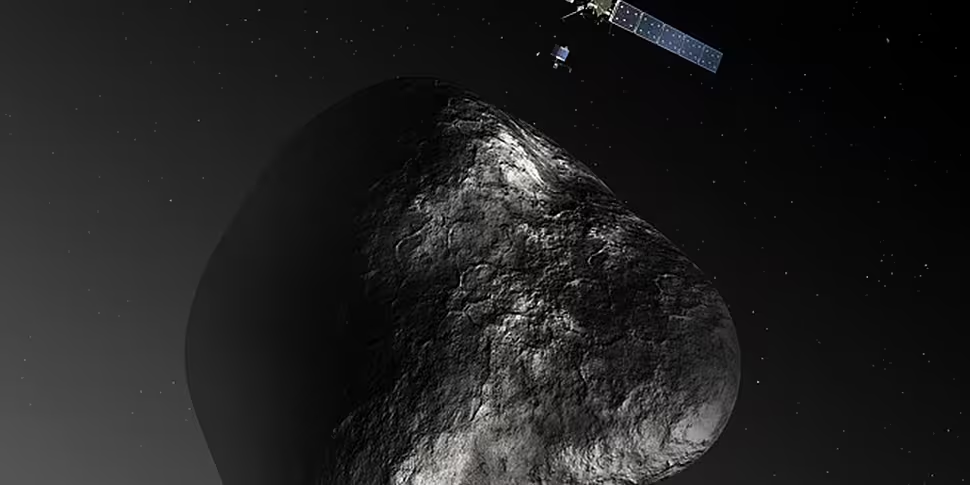A snoozing spacecraft set the ambitious target of landing on a comet at nearly 25,000mph has been woken from hibernation.
Scientists at the European Space Agency (ESA) sounded Rosetta's internal alarm clock to reboot the mission after two and a half years of deep-space slumber.
Once its systems warm up, Rosetta is due to beam a signal back to Earth before it begins to home in on a frozen rock known as 67P/Churyumov-Gerasimenko.
It is due to shoot harpoons into the 2.5-mile dirtball before landing on its surface - a move that has never been attempted before.
The mission has been likened to that of the action film Armageddon, in which Bruce Willis lands on an asteroid to save the world from destruction.
Later this year it will harpoon itself to the lump of rock and ice in a world first. The comet-chasing spacecraft has been asleep for the last 31 months.
Digitally-generated image of Rosetta approaching the comet
The startrackers on the spacecraft are warming up, which will take around six hours.
Rosetta will then send a signal to Earth to announce that it is in fact awake. The first window of opportunity to receive a signal is between 5:30pm to 6:30pm this evening.
Watch the craft's journey so far below:
Since its launch from the ESA Spaceport in Kourou on March 2nd 2004, Rosetta has travelled to a distance of some 800 million kilometres from the Sun and close to the orbit of Jupiter, passing by Earth three times and Mars once, and flying past two asteroids.
It is now closing in on its destination, Comet 67P/Churyumov–Gerasimenko, as it moves farther into the inner our solar system.
A diagram of Rosetta's instruments
The 2.5-mile-wide comet has almost no gravity, so the probe will have to use harpoons and ice anchors to clamp on to the surface.
It will study the plume of gas and water vapour that will boil off and trail behind as Churyumov-Gerasimenko nears the Sun.

Digitally-generated image of Rosetta on the comet
It will also analyse the chemical signature of hydrogen on the comet. If it matches that found in water on Earth it will strongly suggest that comets smashing into the planet billions of years ago filled the oceans.
And they may also have brought some of the ingredients for life.











